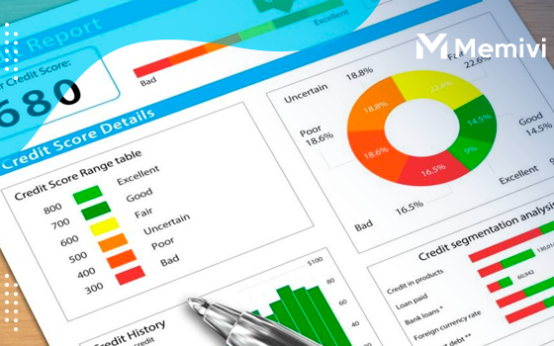
As a student, the financial aid application process can be overwhelming. It can be frustrating to feel like you’re not making any headway, especially if you’ve been rejected before.
But there’s good news: there are unconventional strategies that can help you break the mold and increase your chances of getting the financial aid you need. In this post, we’ll share with you some out-of-the-box tips and tricks that can help you succeed in your financial aid application.
From thinking outside the box to leveraging your creativity, we’ll show you how to stand out from the crowd and get the funding you deserve. So, if you’re tired of the same old advice, keep reading for some fresh insights on how to break the financial aid application mold.
Common challenges faced by students in the financial aid application process
The financial aid application process can be a daunting and overwhelming experience for many students. While there is a general understanding of the standard requirements and procedures, it is important to recognize the common challenges that students often face during this crucial process.
One of the primary challenges is the complexity of the application itself. The financial aid application typically consists of numerous forms, documents, and information that need to be accurately filled out and submitted. This can be overwhelming, especially for first-generation college students or those with limited experience navigating bureaucratic processes.
Another common challenge is the strict deadlines associated with financial aid applications. Students must adhere to specific timelines and submission dates, which can add pressure and stress to an already busy academic schedule. Procrastination or lack of awareness of these deadlines can result in missed opportunities for financial assistance.
Financial transparency is yet another challenge faced by students. The process often requires providing detailed information about family income, assets, and expenses. This level of transparency can be uncomfortable or even embarrassing for some students, especially if they come from low-income backgrounds or have complicated family situations.
Unconventional strategies to break the mold
When it comes to applying for financial aid, thinking outside the box can often yield surprising results. While traditional strategies can be effective, exploring unconventional approaches can help break the mold and increase your chances of securing the aid you need.
- Leveraging personal narratives and unique circumstances
When it comes to applying for financial aid, most students and families tend to follow a conventional path, filling out forms, submitting documentation, and hoping for the best.
However, there is a way to stand out from the crowd and increase your chances of securing the financial assistance you need: leveraging personal narratives and unique circumstances.
Instead of solely relying on numbers and figures, consider telling your story through your application. Share your personal journey, highlighting any challenges or hardships you have overcome.
Admissions officers and financial aid committees are often moved by personal narratives that demonstrate resilience and determination. Furthermore, if you have any unique circumstances that may have impacted your financial situation, be sure to highlight them.
This could include being a first-generation college student, coming from a low-income background, or experiencing significant changes in your family’s financial circumstances due to unforeseen events.
- Highlighting unconventional achievements and experiences
When it comes to applying for financial aid, many students tend to focus on traditional achievements such as high GPA, standardized test scores, and extracurricular activities.
While these are important factors, highlighting unconventional achievements and experiences can set you apart from other applicants and increase your chances of receiving financial aid. Unconventional achievements can include a wide range of experiences that demonstrate your unique skills, passions, and dedication.
For example, if you have successfully started and managed your own small business, don’t hesitate to mention it in your application. This shows initiative, entrepreneurial spirit, and financial responsibility – qualities that financial aid committees may find impressive.
Similarly, if you have overcome significant challenges or adversity in your life, don’t shy away from sharing these experiences. Whether it’s volunteering in underprivileged communities, participating in a humanitarian mission, or even starting a social justice initiative, highlighting these unconventional experiences can showcase your resilience, empathy, and commitment to making a difference.
- Utilizing creative formats for application materials
When it comes to applying for financial aid, it’s crucial to stand out from the crowd. While traditional application materials like essays and transcripts are important, utilizing creative formats can give you an edge and make a lasting impression on the selection committee.
One unconventional strategy is to create a video resume or portfolio. Instead of submitting a traditional paper resume, consider showcasing your skills, experiences, and achievements through a visual medium. Use this opportunity to demonstrate your passion, creativity, and communication skills.
Whether you choose to record a professional interview-style video or showcase your projects and accomplishments in a visually appealing way, a video resume or portfolio can help you capture the attention of the decision-makers.
Another creative format to consider is a personal website or online portfolio. This allows you to present your application materials in a visually engaging and interactive manner. You can include a professional biography, samples of your work, testimonials, and even a blog to showcase your thoughts and insights. A well-designed and thoughtfully curated online presence can demonstrate your professionalism, technological proficiency, and attention to detail.
- Seeking alternative sources of financial support
When it comes to funding your education, thinking outside the box can lead to unexpected opportunities. While traditional financial aid options like scholarships, grants, and loans are widely known, there are alternative sources of financial support that can help you break free from the mold.
One unconventional approach is seeking out niche scholarships or grants that cater to specific interests, talents, or backgrounds. These awards may not have as much competition as larger, more general scholarships, increasing your chances of securing funding.
For example, if you have a passion for art, look for scholarships offered by local art organizations or galleries. If you excel in a particular sport, explore athletic scholarships offered by regional or community clubs.
Crowdfunding platforms have also emerged as a popular way to seek financial assistance for education. By sharing your story and goals, you can engage with a wide network of potential donors who may be willing to contribute towards your education. Websites like GoFundMe or Kickstarter provide a platform to showcase your aspirations and gain support from family, friends, and even strangers who resonate with your cause.
Tips and advice for implementing these strategies effectively

Implementing unconventional strategies for financial aid applications can be a game-changer for students and their families. To ensure success, it is essential to follow these tips and advice to effectively implement these strategies.
1. Research and understand the unconventional strategies: Before diving into implementing any unconventional strategies, take the time to thoroughly research and understand them. Familiarize yourself with the different approaches, such as negotiating financial aid packages, appealing for more aid, or seeking alternative sources of funding. Understanding the strategies will empower you to make informed decisions and maximize your chances of success.
2. Stay organized: Keeping track of deadlines, required documents, and communication with financial aid offices is crucial. Create a detailed calendar or spreadsheet to stay organized and ensure nothing falls through the cracks. This level of organization will help you stay on top of deadlines and demonstrate your commitment to the financial aid process.
3. Seek professional guidance: Consider seeking professional guidance from a financial aid consultant or a knowledgeable expert in the field. These professionals can provide valuable insights, personalized advice, and help you navigate the complexities of the financial aid system. They can also assist in identifying unconventional strategies that align with your specific circumstances.
4. Tailor your approach: Each student’s situation is unique, so it’s important to tailor your approach to fit your circumstances. Take into account factors such as your income, assets, academic achievements, and personal background. Customize your strategy to highlight your strengths and address any potential challenges you may face.
Final Thoughts
Remember, every student’s financial situation is unique, so it’s crucial to explore all available options and tailor your approach accordingly. By breaking the mold, you can stand out from the crowd and make a compelling case for why you deserve financial assistance. Good luck with your application, and may your educational goals be realized!


 Best Allowance and Chore App for Kids <p class='sec-title' style='line-height: normal; font-weight: normal;font-size: 16px !important; text-align: left;margin-top: 8px;margin-bottom: 0px !important;'> As parents, we all know how challenging it can be to teach our children the value of money and how to manage it effectively. </p>
Best Allowance and Chore App for Kids <p class='sec-title' style='line-height: normal; font-weight: normal;font-size: 16px !important; text-align: left;margin-top: 8px;margin-bottom: 0px !important;'> As parents, we all know how challenging it can be to teach our children the value of money and how to manage it effectively. </p>  Victory for Consumers as All Three Credit Bureaus Now Offer Weekly Free Report Access <p class='sec-title' style='line-height: normal; font-weight: normal;font-size: 16px !important; text-align: left;margin-top: 8px;margin-bottom: 0px !important;'> In a victory for consumers everywhere, all three credit bureaus have announced that they will now offer free weekly credit reports. </p>
Victory for Consumers as All Three Credit Bureaus Now Offer Weekly Free Report Access <p class='sec-title' style='line-height: normal; font-weight: normal;font-size: 16px !important; text-align: left;margin-top: 8px;margin-bottom: 0px !important;'> In a victory for consumers everywhere, all three credit bureaus have announced that they will now offer free weekly credit reports. </p>  Revolutionizing Comfort: The Best HVAC Software of 2024 <p class='sec-title' style='line-height: normal; font-weight: normal;font-size: 16px !important; text-align: left;margin-top: 8px;margin-bottom: 0px !important;'> As technology advances, it's becoming increasingly more important to use software that can help streamline your business and keep you competitive. </p>
Revolutionizing Comfort: The Best HVAC Software of 2024 <p class='sec-title' style='line-height: normal; font-weight: normal;font-size: 16px !important; text-align: left;margin-top: 8px;margin-bottom: 0px !important;'> As technology advances, it's becoming increasingly more important to use software that can help streamline your business and keep you competitive. </p>